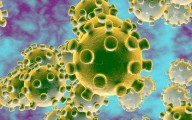
New Delhi, The spread of the novel coronavirus may lead to around around 10 lakh "symptomatic cases" in Delhi in the optimistic scenario, while the numbers may reach up to over 1 crore in a pessimistic scenario, according to projections based on a mathematical model by The Indian Council of Medical Research (ICMR).
In the optimistic scenario, the symptomatic cases may reach around 5 lakh each in Mumbai, Bengaluru and Kolkata, said the study, adding that such a situation would peak over a period of 200 days, beginning February.
In the pessimistic scenario, the symptomatic cases may reach 40 lakh in Mumbai, which will peak in just 50 days starting February.
The study titled "Prudent public health intervention strategies to control the coronavirus disease 2019 transmission in India: A mathematical model-based approach" said that home quarantine of symptomatic can reduce the overall expected number of cases by 62 per cent and the peak number of cases by 89 per cent.
Introduction of community transmission, which is the third stage of the spread of coronavirus, in India could be delayed by early passenger screening and social distancing measures "in the most optimistic scenario", but it cannot be stopped completely, warned India's top health research body.
The research based on a mathematical model was prepared about a month ago.
It focused on airports in Delhi, Mumbai, Kolkata and Bengaluru as the air passengers were thought of being at risk of carrying the virus when they return from coronavirus-infected countries.
The government introduced thermal screening at airports earlier this month.
India's Heath Ministry has said it has screened over 1.5 lakh people at the airport.
"We may expect eight to ten severe and 40-50 non-severe COVID-19 cases for every death. In a closed setting of similar nature as that on the cruise ship ‘Diamond Princess,' we may expect 26 per cent of the entire population to get infected and one in 450 infected individuals to die," reads the mathematical study by the ICMR.
The data used was only from "airport arrivals and in particular from China".
It added that "assumptions are likely to be underestimates in the current situation where people are travelling from many other countries that are now reporting COVID-19 cases".
The analysis was based on a simple Susceptible-Exposed-Infectious-Recovered (SEIR) model to capture the natural history of COVID-19 and its transmission dynamics.
"Port-of-entry-based entry screening of travellers with suggestive clinical
features and from COVID-19-affected countries, would achieve modest delays in the introduction of the virus into the community. Acting alone, however, such measures would be insufficient to delay the outbreak by weeks or longer," said the study.
"Once the virus establishes transmission within the community, quarantine
of symptomatics may have a meaningful impact on disease burden," it added.
"Model projections are subject to substantial uncertainty and can be further refined as more is understood about the natural history of infection of this novel virus. As a public health measure, health system and community preparedness would be critical to control any impending spread of COVID-19 in the country," the study authors noted.
The research was published in the The Indian Journal of Medical Research.


.jpeg)

